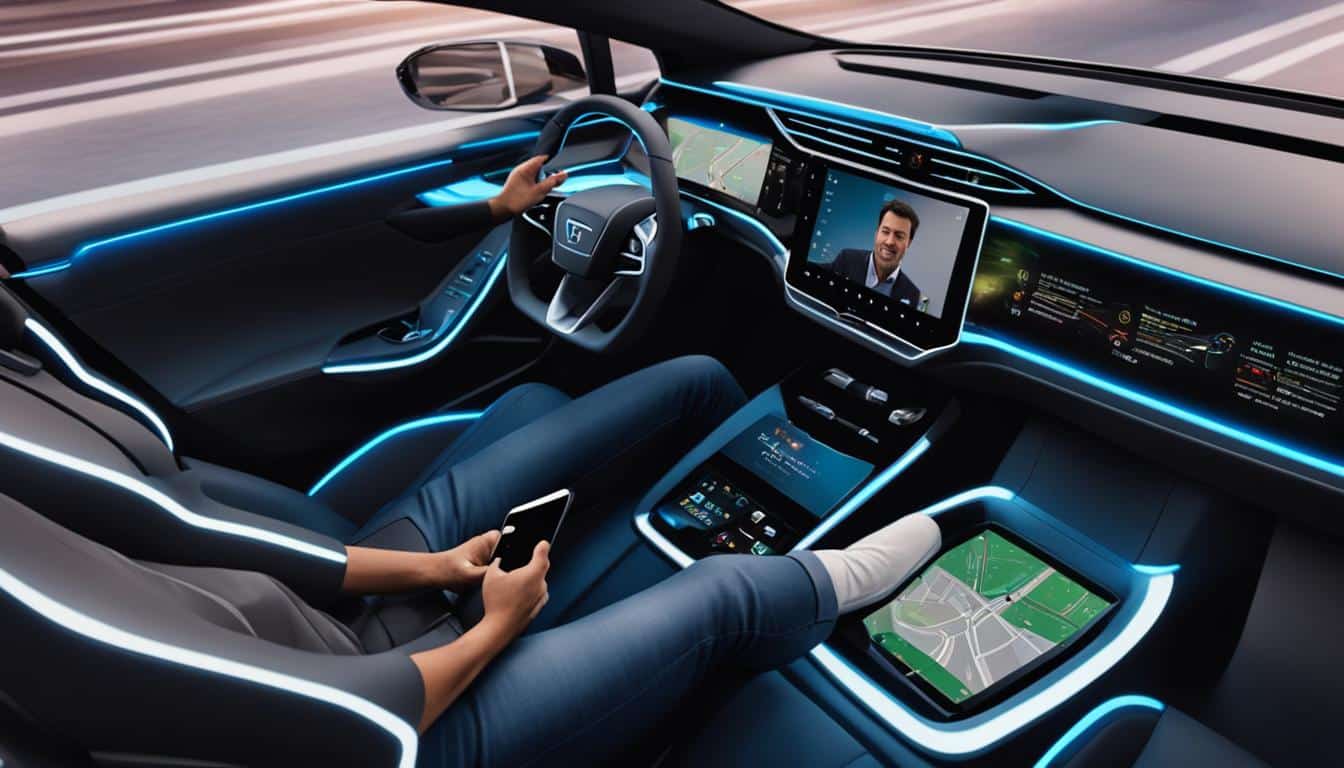
Building Trust: Consumer Confidence in Autonomous Vehicle Technology
As technology continues to advance at an unprecedented pace, autonomous vehicles (AVs) are becoming an increasingly common sight on our roads. However, despite the potential of this innovative technology, consumer trust in AVs has experienced a decline in recent years. This article delves into the factors affecting consumer confidence and explores strategies for building trust in autonomous vehicle technology.
Key Takeaways:
- Consumer trust in autonomous vehicles has declined for the second consecutive year.
- Confusion about the level of autonomy and safety concerns contribute to this decline.
- Education and increased consumer awareness are vital in building trust in AV technology.
- Demonstrating the value and convenience of AVs is crucial for winning consumer confidence.
- Involving consumers in the design process and collaborating with stakeholders can enhance trust.
The Importance of Educating the Public
One of the main obstacles to building consumer trust in autonomous vehicles (AVs) is the lack of awareness and understanding among the public. Many people are unfamiliar with how AVs work and the benefits they offer.
The automotive industry plays a significant role in educating the public about AV technology. By providing clear and accurate information, addressing common myths and misconceptions, and showcasing success stories and testimonials, the industry can increase consumer knowledge and confidence in AVs.
Education is key to raising consumer awareness about AV technology. By explaining the safety features, testing procedures, and regulatory standards associated with AVs, the industry can help consumers make informed decisions and alleviate concerns. Through transparent communication, the public can develop a better understanding of how AVs operate and the potential benefits they offer.
“Educating the public is crucial to overcome the skepticism and uncertainty surrounding AVs. By providing accurate and accessible information, we can empower consumers to embrace this transformative technology.” – Sarah Johnson, AV Industry Expert
Moreover, addressing common misconceptions is essential in educating the public about AVs. Many people have concerns about the safety and reliability of autonomous technology. By debunking myths and highlighting the rigorous testing and development processes undertaken by the industry, consumer trust can be fostered, and awareness can be expanded.
Stories and testimonials showcasing the positive experiences of consumers who have embraced AV technology can also have a powerful impact. These real-life accounts can resonate with the public and demonstrate the potential benefits of AVs in terms of convenience, safety, and efficiency.
Benefits of Educating the Public
Educating the public about AV technology offers several advantages. Firstly, it creates consumer awareness and reduces uncertainty. By understanding the capabilities and limitations of AVs, consumers can make informed choices and have realistic expectations.
Secondly, education promotes consumer safety. By informing the public about the safety features and protocols in place, the industry can enhance consumer trust and mitigate concerns related to accidents or malfunctions.
Lastly, educating the public on the benefits of AVs, such as reduced traffic congestion, improved environmental sustainability, and enhanced mobility options, can foster support and acceptance of this technology.
| Benefits of Educating the Public | |
|---|---|
| Increased consumer awareness | Reduces uncertainty and promotes informed decision-making |
| Enhanced consumer safety | Builds trust and mitigates safety concerns |
| Support and acceptance of AV technology | By showcasing the societal and environmental benefits |
Demonstrating the Value of Autonomous Vehicles
To convince consumers to trust AVs, it is crucial to demonstrate the value and convenience that autonomous technology can bring to their lives. By highlighting the advantages of AVs over conventional cars, we can showcase the value proposition of this revolutionary technology.
Advantages of AVs
- Lower Maintenance Costs: AVs are designed with advanced self-diagnostic systems, reducing the need for frequent and expensive repairs.
- Increased Efficiency: AVs can optimize routes and driving patterns, leading to improved fuel efficiency and reduced travel time.
- Reduced Emissions: By adopting AVs, we can contribute to a greener planet with reduced carbon emissions and air pollution.
- Enhanced Leisure Time: Imagine having extra free time during your commute to catch up on emails, read a book, or simply relax.
Furthermore, AVs offer broader benefits that extend beyond personal convenience. Emphasizing the social and environmental advantages can resonate with consumers:
- Improved Road Safety: AVs are equipped with advanced sensor technologies and sophisticated algorithms that enhance safety by minimizing human error, leading to safer roads for all.
- Reduced Congestion: The intelligent coordination of AVs can optimize traffic flow, reducing congestion and improving overall transportation efficiency.
By highlighting these advantages, we can motivate consumers to embrace AV technology, recognizing its potential to transform transportation and create a more sustainable future.
Involving Consumers in the Design and Development Process
When it comes to building consumer trust in autonomous vehicles (AVs), actively involving consumers in the design and development process can make a significant difference. By seeking out their feedback and suggestions, the automotive industry can create user-centered AVs that align with consumer preferences and expectations. This approach not only fosters a sense of ownership and engagement among consumers but also enhances their satisfaction and loyalty to the technology.
User engagement is key to ensuring that AVs meet the needs and desires of potential and existing users. By actively seeking consumer feedback, car manufacturers and technology companies gain valuable insights on how to improve the features and functionality of AVs. User-centered design is all about putting the people who will be using the technology at the forefront of the development process, resulting in a product that truly resonates with its intended audience.
One effective method of involving consumers in the AV design process is through trials and demonstrations. By inviting users to experience AVs firsthand, they can witness the performance, safety, and convenience of this technology. This hands-on approach helps to build trust in AVs by giving consumers a tangible experience and dispelling any doubts or misconceptions they may have.
“Involving consumers in the design and development of AVs is crucial for building trust. It allows us to create a technology that truly meets their needs and ensures their voices are heard.” – Sarah Johnson, AV Development Manager at DriveAuto
Consumer feedback is invaluable for the continuous improvement of AV technology. By actively listening to the experiences and suggestions of users, the automotive industry can iterate and innovate, addressing any concerns or limitations that arise. This iterative process further demonstrates the industry’s commitment to creating a user-friendly and reliable AV ecosystem.
Benefits of Involving Consumers in AV Design
When consumers are involved in the design and development of AVs, several benefits emerge:
- Enhanced user experience: By incorporating user feedback, AVs can be tailored to provide a seamless and intuitive user experience, reducing any learning curves or frustrations.
- Improved safety features: Direct input from consumers can shed light on potential safety concerns and inform the development of robust safety features to address them.
- Increased consumer confidence: Involving consumers builds trust and confidence in AVs by demonstrating that their opinions and perspectives are valued and integrated into the technology.
- Higher adoption rates: AVs that meet consumer expectations and preferences are more likely to be embraced by the public, accelerating adoption rates and the overall growth of the AV market.
By embracing user engagement, consumer feedback, and user-centered design, the automotive industry can create AVs that truly resonate with consumers. This collaborative approach emphasizes the importance of consumer trust and ensures that AVs meet the needs and expectations of their intended users. Ultimately, the involvement of consumers in the design and development process is a vital step towards establishing widespread acceptance and adoption of AV technology.

Collaborating with Stakeholders
In order to build consumer trust in autonomous vehicles (AVs), collaboration with various stakeholders in the transportation ecosystem is essential. By working closely with regulators, policymakers, insurers, infrastructure providers, and media, the automotive industry can establish clear and consistent rules and standards for AVs, ensuring their safety and legality.
Partnerships with these stakeholders can also create a supportive environment for AVs, including dedicated lanes, smart signals, wireless communication, and public education. This collaborative approach not only enhances the safety and convenience of AVs but also builds trust, credibility, and societal acceptance of this transformative technology.
Below is a table highlighting the key stakeholders in AV collaboration and their roles:

| Stakeholder | Role |
|---|---|
| Regulators | Establishing safety and regulatory standards for AVs |
| Policymakers | Creating supportive policies and legislation for AV deployment |
| Insurers | Developing insurance frameworks for AVs and managing potential liabilities |
| Infrastructure Providers | Designing and implementing AV-friendly infrastructure, such as dedicated lanes and smart signals |
| Media | Communicating accurate and transparent information about AVs to the public |
Through effective collaboration, the automotive industry can address concerns, bridge gaps, and ensure that AVs meet the highest safety and regulatory standards. By working hand in hand with stakeholders, the industry can pave the way for a future where AVs are widely accepted and embraced as a safe, efficient, and sustainable mode of transportation.
Continuous Innovation in AV Technology
Continuous innovation plays a crucial role in building consumer trust in autonomous vehicles (AVs). As the automotive industry continues to invest in research and development, technological advancements are driving the improvement of AVs in terms of technology, quality, and reliability. These advancements not only benefit the industry but also meet the evolving expectations of consumers.
One aspect of innovation in AV technology is the introduction of new features and services that cater to consumer expectations. Personalization is a key factor that consumers value in their vehicles, and AVs can provide personalized experiences through advanced driver assistance systems and customizable settings. By offering entertainment options, such as integrated infotainment systems and enhanced connectivity, AVs can create an enjoyable and engaging environment for passengers.
Security is another aspect where innovation is crucial. Consumers place high importance on the safety and security of their vehicles. AV technology can incorporate advanced security features, such as biometric authentication, encrypted communication systems, and robust cybersecurity measures. These advancements provide consumers with peace of mind and instill confidence in the technology.
Furthermore, consumer expectations regarding mobility are evolving. AVs have the potential to revolutionize transportation by improving accessibility and convenience. For example, autonomous ride-sharing services can offer on-demand mobility options, reducing the need for individual car ownership and promoting efficient transportation. Additionally, AVs can enhance mobility for individuals with disabilities, providing greater independence and inclusivity.
Continuous innovation in AV technology is not only essential for meeting consumer expectations but also for staying ahead in a competitive market. The automotive industry must continue to push the boundaries of technological advancements and anticipate future consumer needs. By doing so, they can enhance the value proposition of AVs, attract more consumers, and contribute to the overall growth and acceptance of this transformative technology.
Innovation in AV Technology
Innovation is at the core of AV technology advancements. Here are some examples of ongoing innovations in the automotive industry:
- Machine Learning and Artificial Intelligence (AI): AVs are equipped with advanced AI algorithms that learn from real-time data and improve their decision-making capabilities. This allows AVs to adapt to changing road conditions and make safer choices.
- Sensor Technology: AVs utilize a range of sensors, including LiDAR, radar, and cameras, to gather data about the surrounding environment. Continuous advancements in sensor technology enable AVs to perceive their surroundings with greater accuracy and make informed decisions.
- Connectivity and Communication: AVs rely on wireless communication systems to interact with other vehicles, infrastructure, and pedestrians. Innovations in connectivity enable AVs to exchange real-time information, enhancing safety and efficiency on the roads.
- Energy Efficiency: The automotive industry is continuously working on improving the energy efficiency of AVs. This includes developing lightweight materials, optimizing powertrain systems, and exploring alternative fuel sources to reduce emissions and promote sustainability.
With each innovation in AV technology, the industry moves closer to achieving widespread adoption of autonomous vehicles. By addressing consumer expectations through continuous innovation, the automotive industry can earn and maintain consumer trust in AV technology.
Conclusion
Building consumer trust in autonomous vehicle (AV) technology is an ongoing and multifaceted endeavor. To instill confidence in AVs, it is crucial to educate the public about the technology, its benefits, and safety measures. By dispelling myths and providing accurate information, the automotive industry can address consumer concerns and increase awareness.
Demonstrating the value of AVs is another key factor in building trust. By highlighting their advantages, such as lower maintenance costs, improved efficiency, reduced emissions, and enhanced leisure time, the industry can appeal to consumers’ rational and emotional needs. Emphasizing the societal benefits, like improved road safety and reduced congestion, can further underscore the value proposition of AVs.
Involving consumers in the design and development process is essential for fostering trust. By seeking feedback, understanding preferences, and incorporating user-centered design principles, the automotive industry can create AVs that align with consumer expectations. User engagement and participation in trials and demonstrations also provide firsthand experiences that can build trust and confidence in AV technology.
Collaboration with stakeholders, such as regulators, policymakers, insurers, and infrastructure providers, is crucial for establishing safety standards, regulatory frameworks, and supportive environments for AVs. By working together, the industry can create a harmonious ecosystem that promotes the safe and successful integration of AVs into the transportation landscape.
Continuous innovation is vital for the future of AV technology. By investing in research and development and staying at the forefront of technological advancements, the automotive industry can meet evolving consumer expectations and enhance the reliability and quality of AVs. Through these collective efforts, it is expected that consumer skepticism will gradually give way to acceptance, paving the way for a future where AVs are an integral part of our transportation system.
FAQ
What is the current level of consumer trust in autonomous vehicles (AVs)?
According to the Mobility Confidence Index Study, consumer confidence in AVs stands at 37 out of 100, showing a decline for the second year in a row.
What factors have contributed to the decline in consumer trust in AVs?
Confusion about the level of autonomy in certain vehicles and concerns over safety due to robotaxi crashes are some of the factors that have led to a decline in consumer trust.
How can the automotive industry educate the public about AV technology?
The automotive industry can play a significant role in educating the public by providing clear and accurate information about AV technology, addressing common myths and misconceptions, and showcasing success stories and testimonials.
What advantages do AVs have over conventional cars?
AVs offer lower maintenance costs, increased efficiency, reduced emissions, and enhanced leisure time compared to conventional cars.
How can the automotive industry involve consumers in the design and development process of AVs?
By soliciting feedback and suggestions from potential and existing AV users, the automotive industry can incorporate their preferences and expectations into the features and functions of AVs, fostering a sense of ownership and engagement among consumers.
Why is collaboration with stakeholders important in building consumer trust in AVs?
Collaboration with regulators, policymakers, insurers, infrastructure providers, and media helps establish clear and consistent rules and standards for AVs, ensuring their safety and legality. It also creates a supportive environment for AVs, including dedicated lanes, smart signals, and public education.
How can continuous innovation help build consumer trust in AVs?
Continuous innovation in AV technology allows the automotive industry to improve the technology, quality, and reliability of AVs. Introducing new features and services that meet changing consumer expectations can enhance the value proposition of AVs and attract more consumers.
